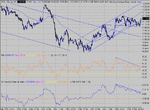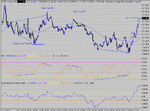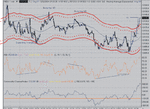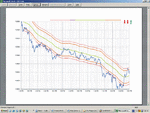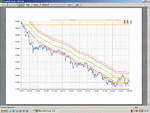CM
I would be very happy to donate the Excel spreadsheet but I doubt anyone would be able to make head of tail of it there is so much in there.
The +- ema part is fairly simple though. I've never used Sierra chart before so I downloaded a trial today. Unfortunatley without a standard data feed [I have my own, incompatible version] it's difficult to work out what to do.
Anyway here's an attempt [if anyone else can help here please feel free to jump in].
Go to the Dow chart select analysis-studies worksheet-add. Click settings and enter say 'emaChannel' in the box at the bottom right. Click OK Ok then select the window menu option and the newly created 'emaChannel.vts' file which should open an spreadsheet. Now I'm on familiar territory.
Your ema100 data should appear in column at or after column AA
In cell k1 type 'ema+20' and in L1 'ema-20' as the data titles.
In cell k3 type '=AA3+20' and in L3 type '=AA3-20' [don't forget the equals sign]
Ok I got a bit lost from here onward. It seems you have to select the Dow from your window menu and press Insert. That should put the new plots into window 2. To put it into widow 1 select the chart window analysis-studies-emachannel then settings and select the chart region 1.
Hope it's not too confusing!
Bill

PS here's another one for 13th April. Not so clear cut this time so perhaps more typical.

